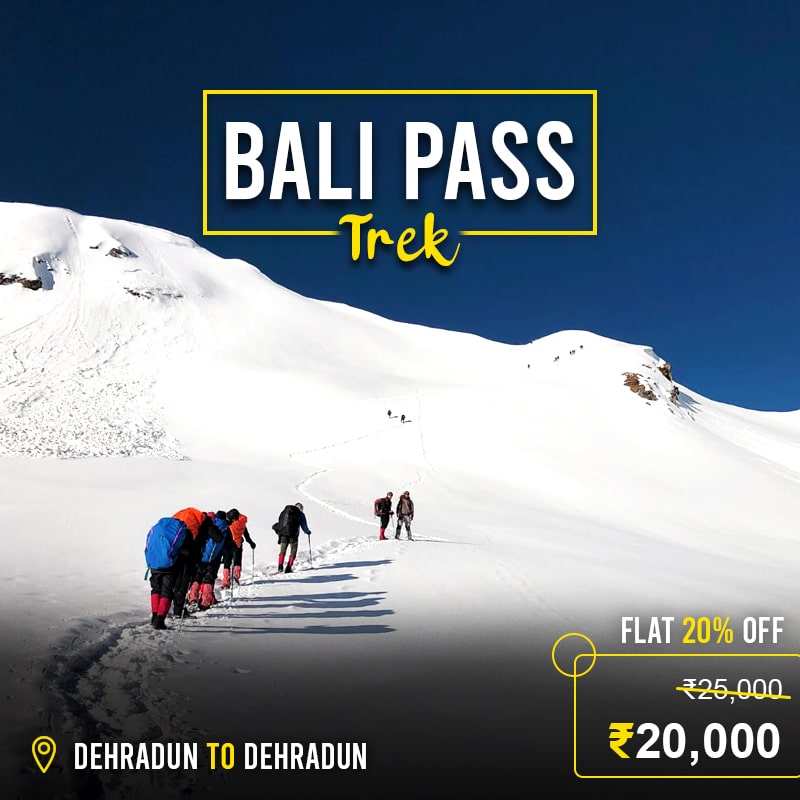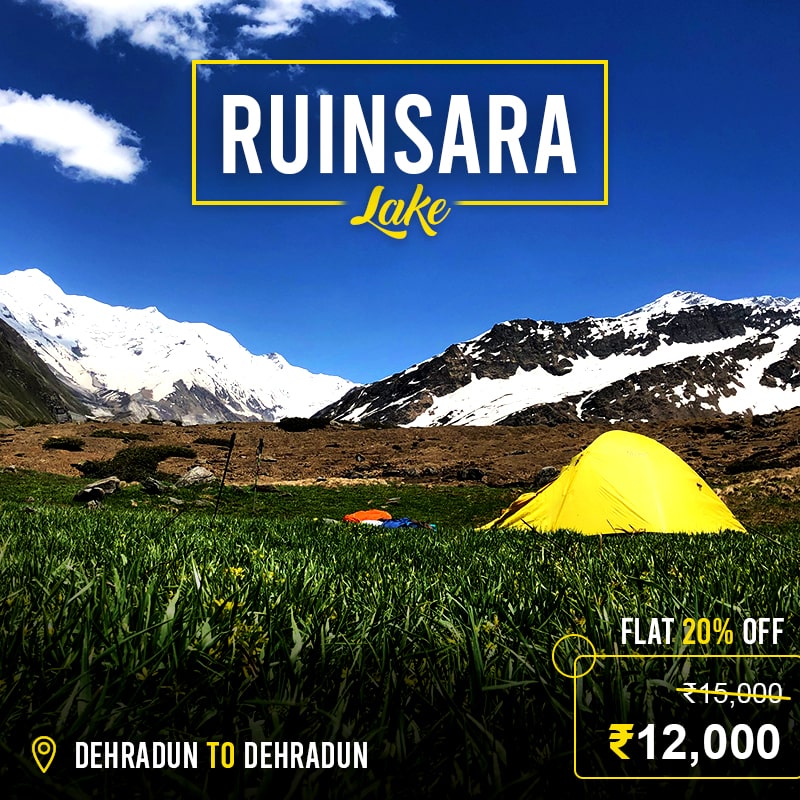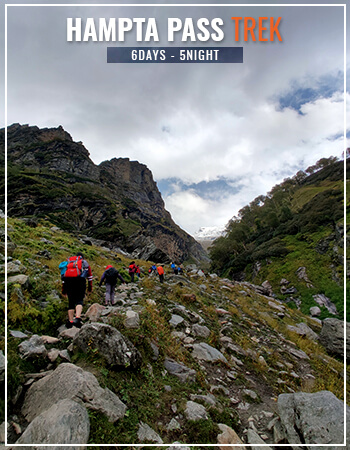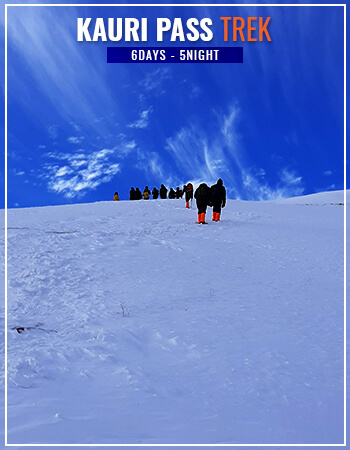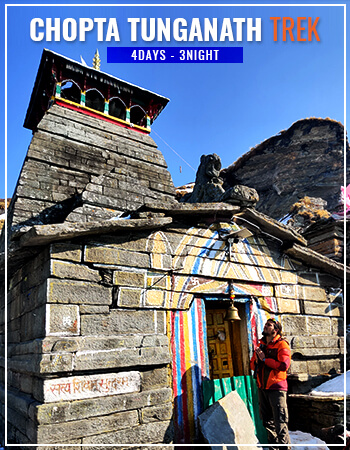GOECHALA TREK
10 Days - 9 Night
10 Days - 9 Night
16,200 ft.
Moderate
Sikkim
ABOUT
GOECHALA TREK
The Goechala trek, located in the heart of Sikkim, is unquestionably one of the best treks in the Himalayas, taking you across the beautiful and diverse Kanchenjunga National Park. The trek showcases the best of the North-East and brings you closer to the famous Mt. Kanchenjunga, the world’s third-highest mountain. The trail is home to a diverse range of spectacular flora and fauna and is regarded as one of the world’s most pristine trails. The Goechala trek is a paradise for trekking adventurers and nature lovers, with awe-inspiring campsites and daunting but majestic peaks.
SHORT ITINERARY
-
DAY 1
From Siliguri towards Yuksom
-
DAY 2
From Yuksom towards Sachen
-
DAY 3
From Sachen towards Tshoka
-
DAY 4
From Tshoka towards Dzongri
-
DAY 5
From Dzongri towards Thansing
-
DAY 6
From Thansing towards Lamuney
-
DAY 7
From Lamuney towards View Point 1 to Thansing
-
DAY 8
From Thansing towards Tshoka
-
DAY 9
From Tshoka towards Yuksom and stay in Yuksom
-
DAY 10
From Yuksom towards Siliguri
DETAILed ITINERARY
Day 1: From Siliguri towards Yuksom
Report in Siliguri by 9 a.m., check-in at the post on Sevoke Road, and board your vehicles for the trip to Yuksom. For admission purposes, bring two passport-size portraits and a copy of your identity proof, as well as your initial ID proof. For immigrants, the laws are different. If you have time on your hands, explore the town; this will aid in your acclimatization. The night will be spent in a hotel in Yuksom.
Day 2: From Yuksom towards Sachen
Yuksom is the starting point for the Goechala trek ( behind the forest check post ). The trail begins by skirting through Yuksom’s fields before entering the lovely Rathong river valley. Today’s trail is all through dense forest, with a few rays of sunshine thrown in for good measure. The trail can be a little slick at times. The fierce Tshushay Khola falls in a sequence of tiny waterfalls joining the Prek River is one of the things to look forward to today. The log huts can be seen all the way down the route. The river Prek, which flows directly underneath the campsite, has a calming tone. Spend the night at Sachen.
Day 3: From Sachen towards Tshoka
The ascent to Tshoka is difficult. We begin by crossing the Prek River on a wooden bridge. The bridge is decorated with Buddhist prayer flags and swings as you step over it. We ascend into the oak and rhododendron forest after crossing the bridge. Tumba, the local malt, is very common. It’s available in Tshoka cafes. Get spectacular views of Mt. Pandim and the whole Kanchenjunga range from the monastery at Tshoka. At Tshoka, you will spend the night in a camp.
Day 4: From Tshoka towards Dzongri
Today is the day that all Goecha la trekkers have been waiting for. Today’s trail involves a long climb. The path travels across thick woodland with blooming pink Rhododendrons in the spring. We arrive at Phedang, a large clearing with stunning views of the range, after a few hours on the trail. Follow the track before you hit Dzongri. It is a vast meadow surrounded by Kanchenjunga’s snow-capped peaks. Enjoy the sensation of being surrounded from all sides by the majestic Himalayas. Ask your guide the names of all the peaks if you’re curious. Dzongri is a great place to spend the night.
Day 5: From Dzongri towards Thansing
Early in the morning, begin trekking to the Dzongri top to observe the kaleidoscopic vision of the sun rising. You’ll have a 180-degree view of the tops of the Singalila and Kanchenjunga ranges from there. The peaks bathed in the first rays of the morning are the kind of vision that makes you think, “I could watch it all day.” Thansing can be seen from the top as well. The path climbs up to Thansing after descending to Kockchurang. The river Prekchu runs through the trail. Thansing is about 2 kilometers away after crossing the river bridge. When you get there, the trail takes you over rocks and boulders. Camps are where you can spend the night. The nights can be chilly in this area.
Day 6: From Thansing towards Lamuney
Today’s hike is relatively straightforward, with the majority of the trail being level. We’ll arrive in Lamuney in around 2-3 hours. The stunning Samiti Lake is about a half-hour drive from Lamuney and is reached through a steep rocky path. On the lakeshore, there’s a fair chance of seeing mountain goats and bluebirds. The lake does not allow camping. We return to our Lamuney camps after enjoying some quality time at the coast. Camps are available for overnight stays.
Day 7: From Lamuney towards ViewPoint 1 to Thansing
We trek up to Viewpoint 1 and down to our camps on the same day, making today the most difficult. However, we have the benefit of leaving some of our belongings in our rucksacks at the Thansing camps, allowing us to trek with a lighter pack. We leave way before sunrise because the distance is long and the trail is steep. Up to Viewpoint 1, the trail ends. With Mt. Pandim and Kanchenjunga so close, the view from Viewpoint 1 is stunning. Spend some time here before heading down to Thansing. In the evening, arrive in Thansing. Here, you will spend the night in a camp.
Day 8: From Thansing towards Tshoka
The path runs through the woods and has a large level gradient with a few minor ascents and descents. When descending, exercise caution and take it slowly. The Prekchu river flows below you, and rhododendron trees line the route. At Tshoka, you will spend the night in a camp.
Day 9: From Tshoka towards Yuksom and stay in Yuksom
Retrace the steps back to Yuksom from Tshoka. It’s a short experience. Make a pit stop in Sachen. The track is mainly downhill from Sachen. Before reaching Yuksom, there are a few ascents in the final segment. The Goechala trek comes to an end today. Staying in a hotel in Yuksom for the night. Make plans to return the next day.
Day 10: From Yuksom towards Siliguri
Early in the morning, board your vehicles for the drive from Yuksom to Siliguri. The journey comes to a close in Siliguri.
subscribe Now
DETAILed ITINERARY
Day 1: From Siliguri towards Yuksom
Report in Siliguri by 9 a.m., check in at the post on Sevoke Road and board your vehicles for the trip to Yuksom. For admission purposes, bring two passport-size portraits and a copy of your identity proof, as well as your initial ID proof. For immigrants, the laws are different. If you have time on your hands, explore the town; this will aid in your acclimatisation. The night will be spent in a hotel in Yuksom.
Day 2: From Yuksom towards Sachen
Yuksom is the starting point for the Goechala trek ( behind the forest check post ). The trail begins by skirting through Yuksom's fields before entering the lovely Rathong river valley. Today's trail is all through dense forest, with a few rays of sunshine thrown in for good measure. The trail can be a little slick at times. The fierce Tshushay Khola falls in a sequence of tiny waterfalls joining the Prek River is one of the things to look forward to today. The log huts can be seen all the way down the route. The river Prek, which flows directly underneath the campsite, has a calming tone. Spend the night at Sachen.
Day 3: From Sachen towards Tshoka
The ascent to Tshoka is difficult. We begin by crossing the Prek River on a wooden bridge. The bridge is decorated with Buddhist prayer flags and swings as you step over it. We ascend into the oak and rhododendron forest after crossing the bridge. Tumba, the local malt, is very common. It's available in Tshoka cafes. Get spectacular views of Mt. Pandim and the whole Kanchenjunga range from the monastery at Tshoka. At Tshoka, you will spend the night in a camp.
Day 4: From Tshoka towards Dzongri
Today is the day that all Goecha la trekkers have been waiting for. Today's trail involves a long climb. The path travels across thick woodland with blooming pink Rhododendrons in the spring. We arrive at Phedang, a large clearing with stunning views of the range, after a few hours on the trail. Follow the track before you hit Dzongri. It is a vast meadow surrounded by Kanchenjunga's snow-capped peaks. Enjoy the sensation of being surrounded from all sides by the majestic Himalayas. Ask your guide the names of all the peaks if you're curious. Dzongri is a great place to spend the night.
Day 5: From Dzongri towards Thansing
Early in the morning, begin trekking to the Dzongri top to observe the kaleidoscopic vision of the sun rising. You'll have a 180-degree view of the tops of the Singalila and Kanchenjunga ranges from there. The peaks bathed in the first rays of the morning are the kind of vision that makes you think, "I could watch it all day." Thansing can be seen from the top as well. The path climbs up to Thansing after descending to Kockchurang. The river Prekchu runs through the trail. Thansing is about 2 kilometers away after crossing the river bridge. When you get there, the trail takes you over rocks and boulders. Camps are where you can spend the night. The nights can be chilly in this area.
Day 6: From Thansing towards Lamuney
Today's hike is relatively straightforward, with the majority of the trail being level. We'll arrive in Lamuney in around 2-3 hours. The stunning Samiti Lake is about a half-hour drive from Lamuney and is reached through a steep rocky path. On the lakeshore, there's a fair chance of seeing mountain goats and bluebirds. The lake does not allow camping. We return to our Lamuney camps after enjoying some quality time at the coast. Camps are available for overnight stays.
Day 7: From Lamuney towards View Point 1 to Thansing
We trek up to Viewpoint 1 and down to our camps on the same day, making today the most difficult. However, we have the benefit of leaving some of our belongings in our rucksacks at the Thansing camps, allowing us to trek with a lighter pack. We leave way before sunrise because the distance is long and the trail is steep. Up to Viewpoint 1, the trail ends. With Mt. Pandim and Kanchenjunga so close, the view from Viewpoint 1 is stunning. Spend some time here before heading down to Thansing. In the evening, arrive in Thansing. Here, you will spend the night in a camp.
Day 8: From Thansing towards Tshoka
The path runs through the woods and has a largely level gradient with a few minor ascents and descents. When descending, exercise caution and take it slowly. The Prekchu river flows below you, and rhododendron trees line the route. At Tshoka, you will spend the night in a camp.
Day 9: From Tshoka towards Yuksom and stay in Yuksom
Retrace the steps back to Yuksom from Tshoka. It's a short experience. Make a pit stop in Sachen. The track is mainly downhill from Sachen. Before reaching Yuksom, there are a few ascents in the final segment. The Goechala trek comes to an end today. Staying in a hotel in Yuksom for the night. Make plans to return the next day.
Day 10: From Yuksom towards Siliguri
Early in the morning, board your vehicles for the drive from Yuksom to Siliguri. The journey comes to a close in Siliguri.
subscribe Now
Get Quote
DEPATURE DATE
Everyday Batch. Call- +91-9458118063 | +91-7579480944
Everyday Batch. Call- +91-9458118063 | +91-7579480944
Everyday Batch. Call- +91-9458118063 | +91-7579480944
Everyday Batch. Call- +91-9458118063 | +91-7579480944
Everyday Batch. Call- +91-9458118063 | +91-7579480944
COST INCLUSION
-
Pick and Drop Service from mentioned location
-
Fees for the guide and the chef
-
Camping facilities' rent
-
Entrance fees to the forest
-
To transport camping gear, a porter and mule are required. Please keep in mind that personal baggage can be borne by mules and/or porters for a fee
-
From the first day's dinner until the last day's brunch, both of the meals are vegetarian
-
Throughout the walk, you'll be staying in a tent or if possible, then in a guest house
COST EXCLUSION
-
No pickup and drop point from/for your hometown
-
Personal costs include things like tips, personal medications, and conference calls, etc
-
Apart from what is mentioned above, some transportation assistance during the trek
-
Porters/mules can carry personal luggage weighing up to 12 kg per bag per person for Rs 350 per day per bag
Frequently asked question
- Footwear: The trekking boots which must be waterproof and snow proof, normal boots, floaters, and woolen socks.
- Backpack: (50 ltr), Daypack (20-30 ltr), Duffel bag.
- Clothes: Jacket and trousers that are both waterproof and breathable. Jacket (synthetic or down feather fleece), synthetic insulated trousers, poncho, sweatshirt, inner thermal (upper & lower), fleece, t-shirts, cotton trekking pants, shorts
- Season wise Clothes:
- Hand and head protection includes liner gloves, bandannas, sun hats, woollen caps, and face masks, among other things.
- Accessories: Sunglasses/goggles, anti-glare lenses, water bottle, hydra bag, and headlamp with spare bulb and extra batteries are all recommended.
- Trekking Gears: Toolkit for an emergency. Sunscreen, a toiletry pack, water purification pills, Ziploc packs, ear plugs, first-aid kit, and the necessary medications are all recommended.
- Camping Equipment: Sleeping bags of lining (extreme -5 to +5 Celsius if you have one), trekking sticks, and so on.
- Warm top/light micro fleece pullover/full sleeve T shirt – 2/3
- Water resistant/repellent trekking pants with an inner lining for added warmth- 2 High-quality windproof/water-resistant outer shell (jacket) with a proper hood
- Thick Fleece / Full-sleeve Woollen Jumper, Down Jacket with at least 600 fill capacity Innerwear with a thermal component (upper and lower)
- Woolen hat, inner fleece gloves, and outer water-resistant gloves
- 4–5 pairs of thick woollen socks and standard socks, scarf/muffler (optional)
- Waterproof Trekking/Hiking shoes with a thick heel and high ankles that are comfortable to wear. Sneakers/sport shoes are ideal for camp.
- Poncho or raincoat. A small, light-weight towel
- A hydration pack and an insulated water bottle (optional)
- Sunglasses with UV cover and the potential to cut light, as well as a cap or floppy hat to shield the strong sun off your skin (important when traversing through snow)
- Trekking pole or sturdy walking stick Lip Balm, Sunscreen Lotion
- Flashlight / torch (with extra batteries) Medications, if any special prescription is needed Toiletries for personal use
- Carry a rain cover over your luggage • Day pack/small bag that you can carry on your back all day to keep your essentials in
- Keep a few poly bags or plastic containers in your bag to place your things in if you need to in case of heavy weather.
Personal Medical Kit (MANDATORY FOR ALL)
- 10 Diamox tablets (to prevent AMS)
- Nifedipine – 5 pills Dexamethasone – one strip
- 6 tablets of Crocin (fever)
- 4 tablets of avomine (motion sickness) 4 capsules of Avil 25mg (allergies)
- 4 tablets of Combiflam (Pain killer)
- 6 tablets each of Norflox TZ and Lomofen (diarrhea) 10 tablets of Digene (acidity)
- 10 Omez/Rantadine capsules (antacids) 3 to 5 metres of crepe bandage
- 1 tiny roll of gauze 10 strips of bandage 1 small roll of cotton 10 packets of ORS
- Moov spray Betadine or other antiseptic cream (aches, & sprains)
- If you're vulnerable to knee injuries, you should wear a knee cap. Powder with antifungal properties
- Cancellation: If a trek is cancelled at the last minute due to a natural disaster or unforeseeable circumstances (such as floods, earthquakes, landslides, attack, or bandh), Discoveryhike will have a trek voucher for the full number. The voucher can be used for the same or a different trek over the next year.
- In case you wish to cancel the trek, then please be aware of these things:
- Cancellations made within 30 days of the trek's launch date will include a complete refund.
- If you cancel within 30 and 20 days before the hike, you will get a 50% refund.
- There will be no refund if you cancel less than 20 days before the trek begins.
- Please keep in mind that if you get a refund, there will be a reduction of 4% (Cancellation charges) from the overall amount you pay. In addition, if you purchased trek insurance, you would not get a refund.
- Discoveryhike assumes no responsibility for any malfunction or injury to your clothes, supplies, or other belongings while on the trek. The trek fee covers all expenses associated with the trek from start to finish.

